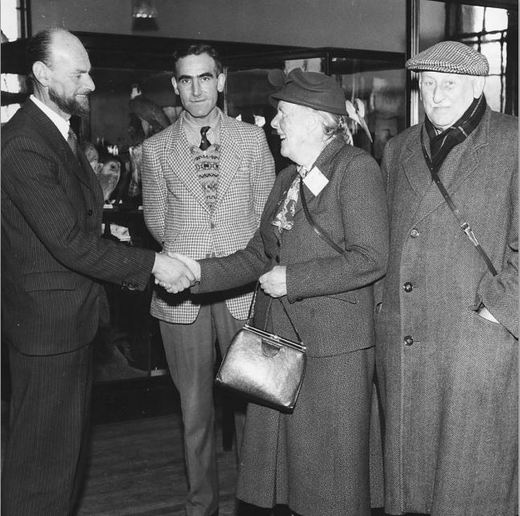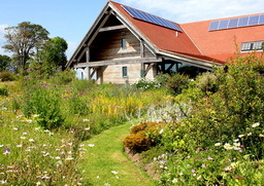"The names of Miss Baxter and Miss Rintoul may become something of a legend among future generations of Scottish naturalists, but to those who knew them, their mention will always kindle a glow of affectionate personal memory."
It continued to tell of how Miss Baxter found in her neighbour Miss Rintoul "a kindred spirit and inseparable companion who shared her love of country activities and particularly of natural history". They had visited Tentsmuir as teenagers, while the area was being made into a nature reserve, and eminent ornithologists involved in the project gave the young ladies every encouragement to study birds. Indeed, Miss Baxter said that Tentsmuir was "the door through which she had entered ornithology". Soon the ladies branched out to study bird migration on the Isle of May - an area which they would study for 25 years, leaving a legacy on the Isle which endures today. Over a number of decades their area of study widened and together they published a number of books. In a 1929 publication they reflected that "though there is a long way yet to be traversed, the continued work done in bird observation is steadily bringing us nearer to our goal of a correct knowledge of the status of every bird in Scotland".
The ladies meticulous work culminated in the publication of their greatest literary work, just before the death of Miss Rintoul in 1953, the two volumes on 'The Birds of Scotland - Their History, Distribution and Migration', which reflected the authors love and knowledge of birds across the whole of Scotland. The book's summary states:
"Of late years the study of ornithology has become much more popular and widespread and, although there are many fine reference works covering birds in Scotland and some good local books, there has never been a comprehensive work on the Birds of Scotland. It seemed well, therefore, that these scattered records, many of great value, should be gathered together to form a comprehensive work. This is what the authors have tried to do and to show also how much the character of the country influences its bird life."
The enduring partnership of Baxter and Rintoul was in the forefront of Scottish ornithology for many years - at a time when females were rarely found in the field - and the duo were widely referred to as "the good ladies". Both were made fellows of the Royal Society of Edinburgh and both are well remembered today in the sphere of ornithology. When I visited the HQ of the SOC this week and told staff I wanted to research Baxter and Rintoul, the response was instant recognition and comments about how 'all this came about due to them'. I'm certain that they would approve of the ongoing success of the Club which they helped to found and that they would have loved to have seen its impressive headquarters in East Lothian (see photo). The next two posts will cover the interesting lives of Miss Baxter and Miss Rintoul in a wider sense.
With thanks to the Scottish Ornithologists' Club for both information and images.



 RSS Feed
RSS Feed
